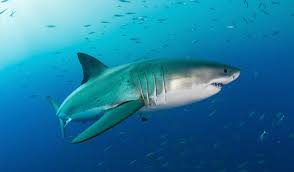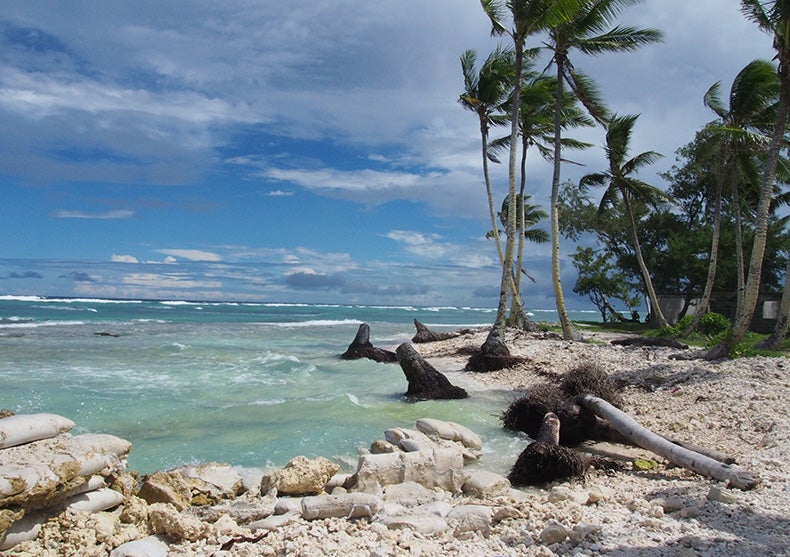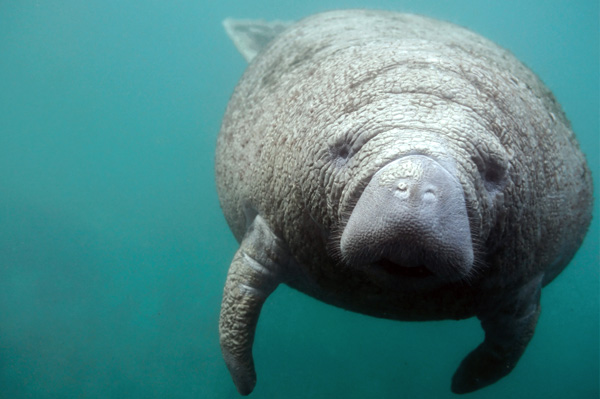1. Satellite Images Reveal Ocean Acidification
According to a new report in the journal Environmental Science & Technology, 25% of the carbon dioxide we release into the atmosphere is absorbed into the ocean. The carbon dioxide increases the acidity of the seawater through a process defined as ocean acidification. Scientists from the University of Exeter, Plymouth Marine Laboratory, Institut français de recherche pour l’exploitation de la mer (Ifremer), the European Space Agency and a team of international collaborators developed a new way to monitor the progression of ocean acidification. Tracking this phenomenon is critical to maintain our aquatic ecosystem. Read more…
2. Evolution ‘Favors Bigger Sea Creatures’
Over the past 542 million years, the average size of marine animal has increased by a factor of 150. This observation is in line with Cope’s rule which proposes that an animal will evolve to a larger body size over time. To confirm this hypothesis, a team from Stanford amassed data on more than 17,000 animal genera and analyzed the size trends throughout millions of years. . Read more…
3. White Sharks Live Longer Than 70 Years and Mature More Slowly Than Previously Thought
4. The Kiribati People Battle Sea Level Rise
The human population on the Pacific Island of Kiribati is taking action against the impacts of sea level rise. After years of tragic storms, erosion damage, and salt water damage, the community has selected a few improvements that they will make to their homeland. See the slideshow of their plans here…
5. How the Humble Sea Snail Produces the Strongest Stuff on Earth
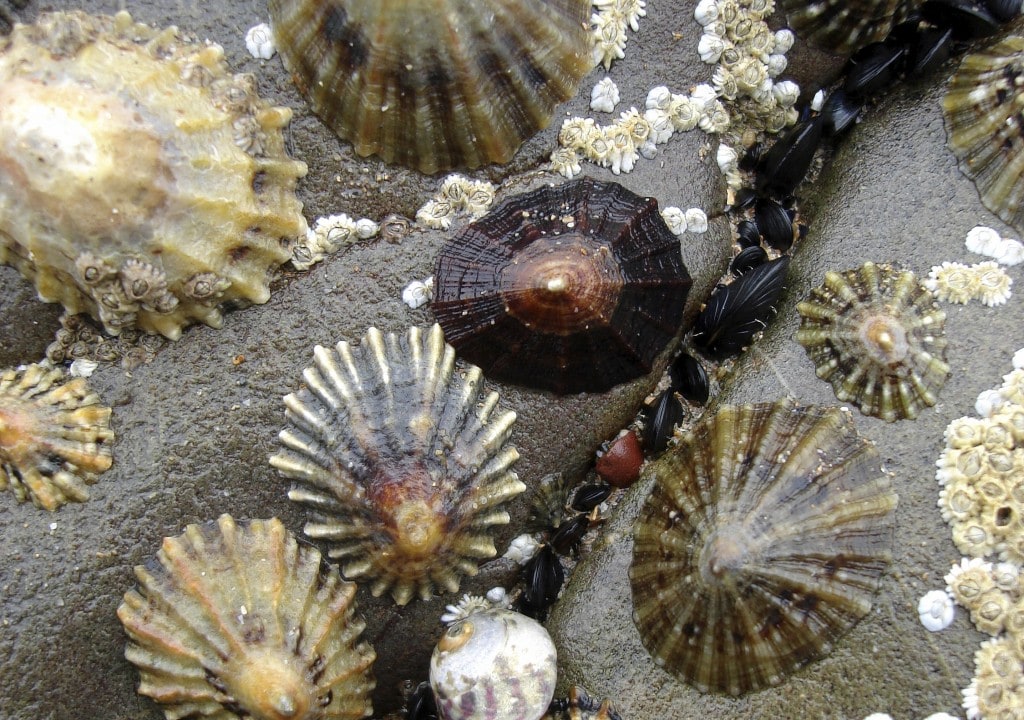 According to a recent study in the Journal of the Royal Society Interface, sea snails have microscopic teeth that are comparable to the strength of steel. Although this seems like silly information, scientists have used the details that they have learned about these structures and apply them to create similar material for aircrafts, boats, or even dental fillings. The strength of the snail’s tooth material outperforms the strength of spider silk which is currently considered the strongest natural fiber. Read more…
According to a recent study in the Journal of the Royal Society Interface, sea snails have microscopic teeth that are comparable to the strength of steel. Although this seems like silly information, scientists have used the details that they have learned about these structures and apply them to create similar material for aircrafts, boats, or even dental fillings. The strength of the snail’s tooth material outperforms the strength of spider silk which is currently considered the strongest natural fiber. Read more…6. New Species, the ‘Ruby Seadragon,’

While reviewing the current data on the two species of sea dragons, the group of scientists at Scripps Institution of Oceanography discovered a third species of seadragon. Not only did the genetic material from this species differ from the two but, the CT scans of the seadragon showed unique skeletal features. The team now hopes that they can launch an expedition to see this exotic fish. Read more…
7. Washington Cetacean Bill Moves to the House
This week the Washington Senate refrained from voting on the bill to ban capture or import of whales, dolphins, and porpoises into the state of Washington. Although the state Senate is on a hold, a companion bill has been submitted to the House to review. Interested in supporting these bills? Read more…
8. Marine Defaunation: Animal Loss in the Global Ocean
Unfortunately, it is no surprise that human activity has impacted marine wildlife. This process is technically referred to as marine defaunation. Although the loss of marine environment has been a slower process than that above sea level, scientists now believe that there may be a significant increase in the future. Read more…
9. A Competition with Real Teeth!
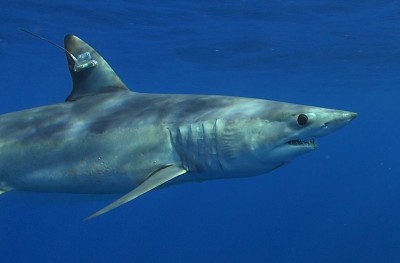 Well, here’s a new one… shark racing. No, this does not involve anyone trying to ride on a shark. The Guy Harvey Research Institute at Nova Southeastern University has started a fundraising event to incorporate shark tracking. In this competition, sharks will be tagged and tracked to see which shark swims the most miles. The purpose of this event is the help raise shark awareness of this species. Think you may be interested in participating? Check out the competition details, Read more…
Well, here’s a new one… shark racing. No, this does not involve anyone trying to ride on a shark. The Guy Harvey Research Institute at Nova Southeastern University has started a fundraising event to incorporate shark tracking. In this competition, sharks will be tagged and tracked to see which shark swims the most miles. The purpose of this event is the help raise shark awareness of this species. Think you may be interested in participating? Check out the competition details, Read more…
10. Experimental Wave-power Buoy Survives Winter in Monterey Bay
After 131 days in Monterey Bay, engineers retrieved the power buoy to check its ability to handle difficult weather. The wave-power converter was anchored to the seafloor throughout the experiment. After six trials, this was the longest period of the time that the power buoy was able to stay out in the sea. Although there is still a significant amount of development left on this product, eventually the power buoy may serve as an underwater docking and charging station for autonomous underwater vehicles. Read more…
11. Fossils Reveal Changes to ‘Immune Adriatic Sea’
A new study reports that there has been a significant shift in bottom-dwelling species in Italy’s Po Basin. Although this area has been known for its diverse shellfish population, it seems that the heavy tourism in this area has diminished the species. To come to this conclusion, researchers observed over 100,000 fossil specimens from geological cores against the data from present-day marine ecosystems. Read more…
12. Penguins Lost Ability to Taste Fish
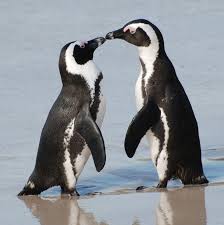 All vertebrates can detect five basic taste: sweet, umami, bitter, sour, and salty. Researchers recently discovered that, through evolution, penguins have lost their sweet, umami, and bitter tastes. Because penguins swallow fish without chewing, it is possible that their taste loss was a consequence of their eating habits. Another theory that was published in Current Biology notes that those taste receptors may not function at low temperatures. Read more…
All vertebrates can detect five basic taste: sweet, umami, bitter, sour, and salty. Researchers recently discovered that, through evolution, penguins have lost their sweet, umami, and bitter tastes. Because penguins swallow fish without chewing, it is possible that their taste loss was a consequence of their eating habits. Another theory that was published in Current Biology notes that those taste receptors may not function at low temperatures. Read more…


